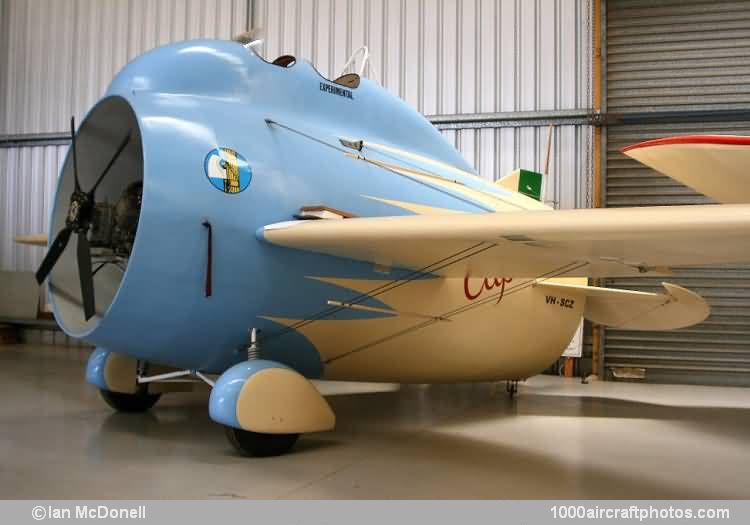In 1932, Caproni at Milan-Taliedo built the Stipa monoplane, a two-seat aircraft built round a barrel-like tubular fuselage, in the front opening of which was mounted a cowled 120 hp de Havilland Gipsy III engine. The Caprioni test pilot Domenico Antonini made the first flight from Taliedo on October 7, 1932. After the initial flight tests, the test program was taken over by the Regia Aeronautica and the aircraft was transferred to the flight test squadron based at Montecelio near Rome; the aircraft was allotted the serial MM187. During test flights, the aircraft exceeded the anticipations of its designer, and although not of very high performance showed itself to have excellent stability and maneuverability. Owing to the peculiar form of the fuselage, which gave a high-lift effect, a claim was made that it carried 37% of the total weight of the aircraft.
The French firm Les Mureaux (Les Ateliers de Constructions du Nord de la France et des Mureaux) acquired the French license for the Stipa patents in 1935. It was intended to build a twin-engined version for the French government, but the plans never reached fruition."
Type: Two-seat experimental monoplane.
Wings: Mid-wing wire-braced monoplane. Each wing of elliptical plan-form is attached to the tube fuselage on the center line and braced with streamline wires above and below. Structure of wood, with fabric covering. Tapering ailerons on skew hinge-line.
Fuselage: Tubular fuselage, of Venturi form, made of wood and covered with either fabric or plywood.
Tail unit: Monoplane type. Fixed tail plane and small fin. Unbalanced elevators and rudder. Wooden construction, with fabric covering.
Landing gear: Divided type. Small spring legs attached to the sides of the tube fuselage, with the bottom ends hinged to the center line of the underside.
Power plant: An 120 hp de Havilland Gipsy III four-cylinder air-cooled inverted in-line engine, mounted in front opening of tubular fuselage and driving tractor airscrew. Standard Gipsy III cowling.
Accommodation: Tandem open cockpits in superstructure built on top of tubular fuselage. Dual controls.
